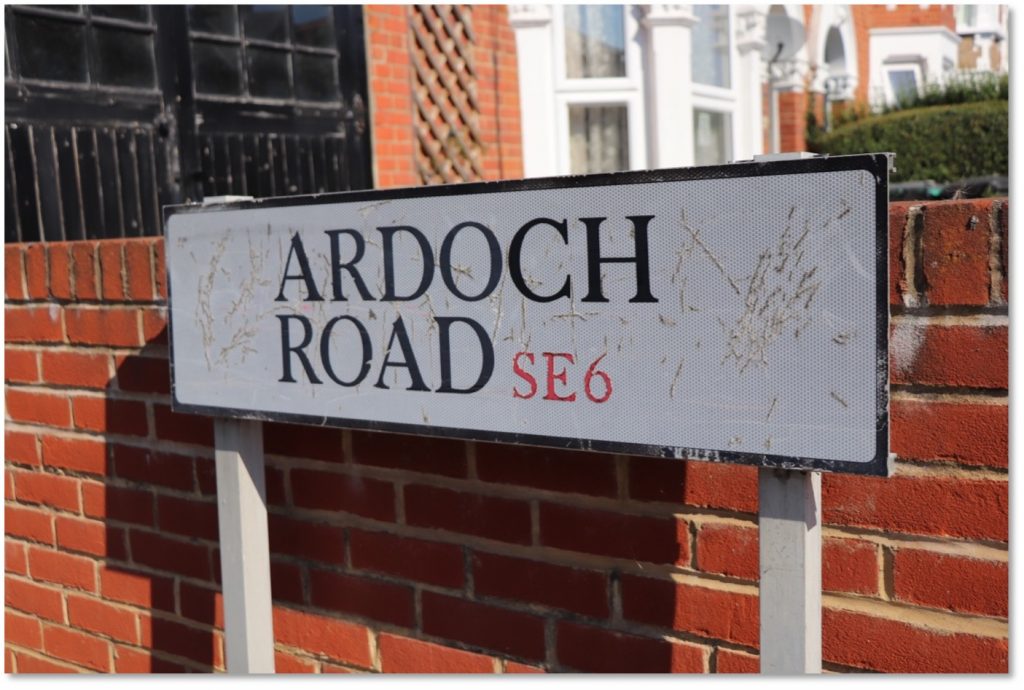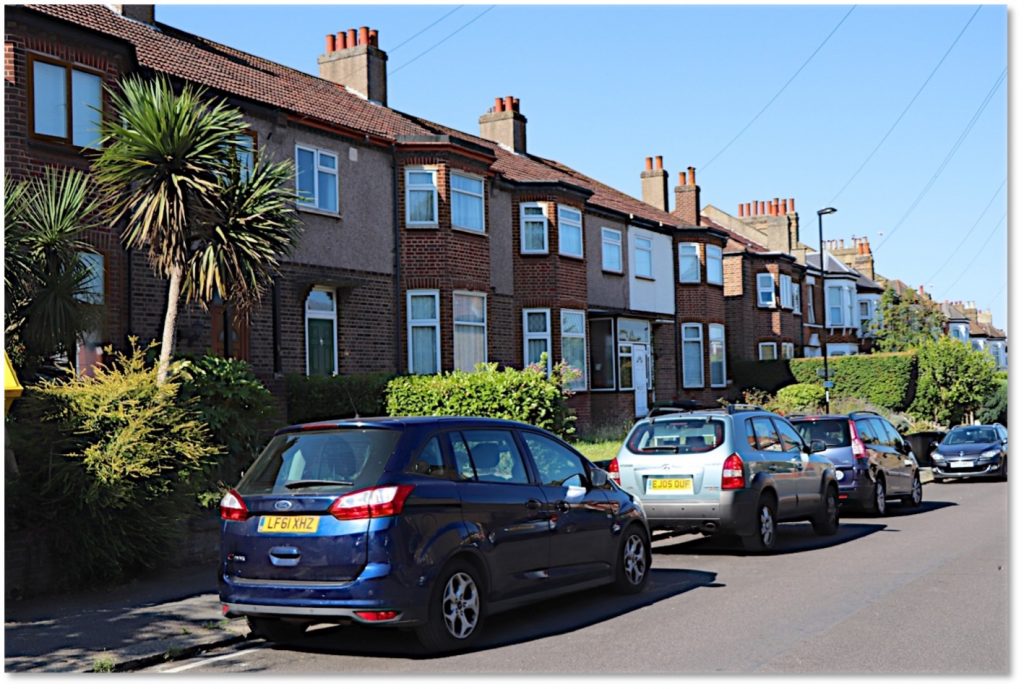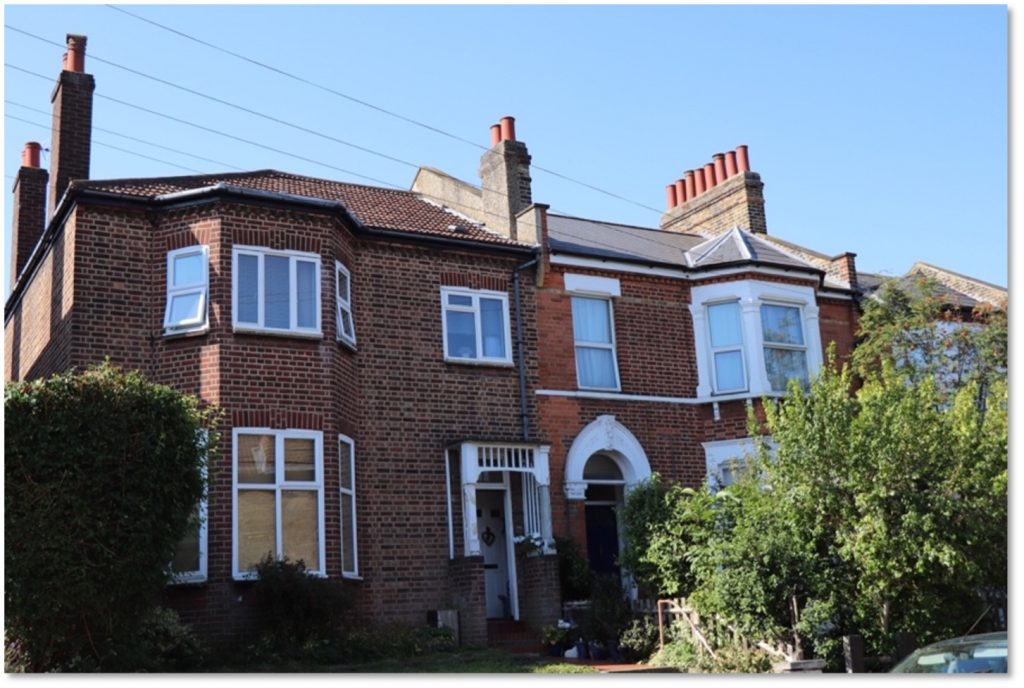“V1 Rocket Strike”

Background
Ardoch was one of the last roads to be built on the Corbett Estate, with construction starting in 1908.
Unfortunately there is an anomaly in the published census data, in that no houses on the northern side of the road are listed. We don’t know why. This means that 19 of the houses (and therefore all their occupants) are excluded from the 1911 list, and that accordingly this Street Profile is incomplete.
According to the data, there were just 51 houses and 211 residents in 1911. The following information is based on those houses and residents. However it’s worth noting that a more accurate total would be 70 houses and 293 people (we know the average density of occupation in the other houses, so if we multiply that by 19, we can hazard a guess at the true number of inhabitants in 1911).
The Early Residents: details from the 1911 Census
Ardoch is in the south of the Estate, and runs west to east up a gentle hill from Muirkirk at the bottom to Torridon Road at the top.
There were no live-in servants in 1911, which was unusual: only two other Corbett streets out of the 27 had no resident servants. This didn’t mean everyone did all their own cleaning and cooking of course: many householders would have employed a ‘Daily Maid’ – a woman or girl who lived locally and spent several hours on household chores each day before returning to their own home. There were still well over a million women employed as domestic servants in Britain in 1911.
The female to male ratio in the street was 53% to 47% – bang on the average for the Estate as a whole. 91% of households in Ardoch contained a married couple, which is slightly higher than the estate-wide average.

A view of Ardoch Road near the junction with Balloch Road. These are post-war versions of Corbett houses, built to replace those hit by a V1 rocket during WW2. The rocket destroyed a whole terrace of six properties (larger houses like these were almost always built in blocks of six on the Estate) and damaged others in nearby streets

Post-war and original Corbett houses side by side. You can see where damage to the right-hand house has been repaired
In terms of the number of people living in each house, the average was 4.13, which is close to the norm for all streets on the estate.
Unusually, the most popular adult female name wasn’t Mary (which was by far the most popular for Corbett residents), but Annie. For men, the top adult name was – as on pretty much every other street – William.
In terms of jobs, 29% of those listed as employed worked as Clerks, which again is par for the course on an estate built primarily for people who commuted into town to do office jobs.
The highest number of children in a single house in 1911 was seven at No. 45. Edward Greenslade (a warehouseman) and his wife Henrietta had, in descending order, William, Elsie, Arthur, Albert, Isabel, Gladys and Herbert. The parents hailed from Bristol, but the elder children were born in Peckham and Camberwell, and the youngest two in Catford.

Ardoch has some nice features, like these iron balconies over the front doors. Tastes in architecture were changing in Edwardian England, and these houses look quite different to some of the earlier, more Gothic-influenced Corbett houses in Hither Green Lane for instance.
Arthur Smith: Journey Man
One of the non-Clerk jobs which stands out in Ardoch Road is that of Arthur Smith, a 34-year-old from West Ham, who lived at No. 7 with his wife Florence and their four children. Arthur put his occupation down as ‘Joiner Journey Man’.
In today’s world, one of the few places you’d come across the term ‘journeyman’ is in relation to football, where it refers to a player who has been employed at numerous clubs in their career (and a presumption that they didn’t achieve a huge amount at any of them). An example is Trevor Benjamin, who started his professional career in 1995 at Cambridge United, and represented 29 different teams before bowing out in 2012.
Back in 1911 however, ‘journeyman’ was a common term which described someone who had successfully completed an apprenticeship (as a ‘joiner’ – or carpenter – in Arthur’s case). He would have been considered a skilled worker, but not up to the standard of a Master Craftsman, who probably had his own business. ‘Journeyman’ comes from the French ‘journée’, meaning day, and is linked to the way people were employed: on a ‘daily’ rate.